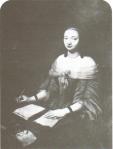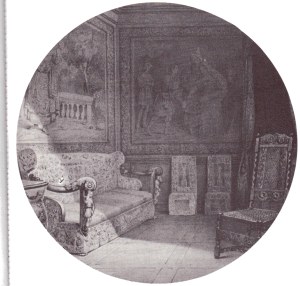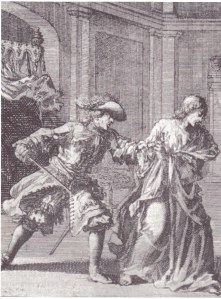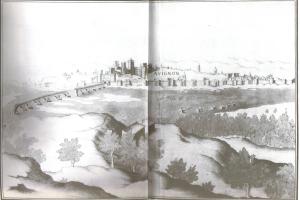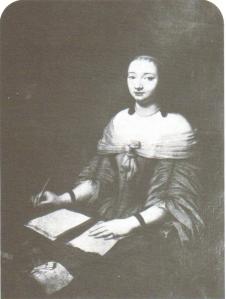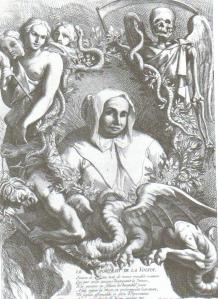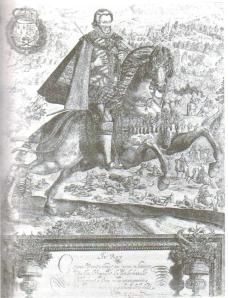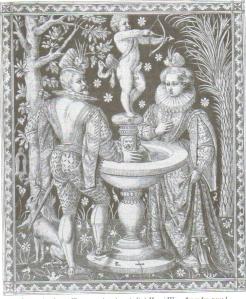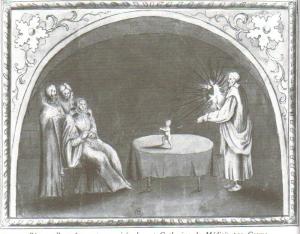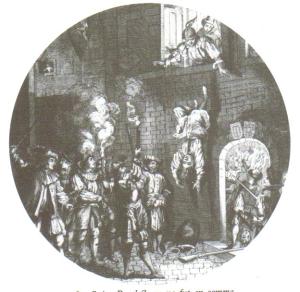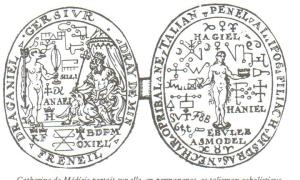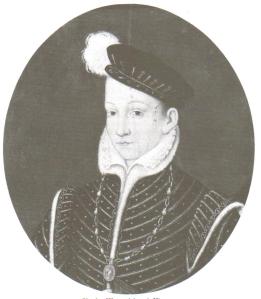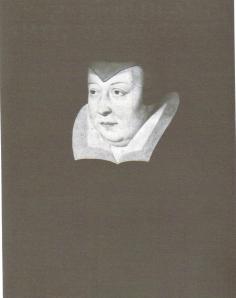The Marquise’s death did not bring any financial gain to her two brothers-in-law. They must have known before they killed her that she would not have mentioned them in her Will, considering their behaviour toward her. Even if they had hoped for her money, they certainly couldn’t have passed off her death as natural.
***
The Abbot and the Knight fled. The Knight took up service with the Venetians who were at war with the Turks at the time. He fought bravely everywhere he went. Even with temerity, to the point that his companions in arms became certain that he wanted to die in combat. He did in fact die under the walls of Candia in 1659 after a battle lost by the Venetians.
The Abbot changed his name and managed to flee to Holland where he started a new life. For many years, he consecrated himself to piety, expiating his faults by extraordinary mortifications. He finally converted to protestantism and died very old, highly respected by all. As for the husband, he was arrested as an accomplice and condemned to perpetual banishment. He went to the Venaissin County, which was then papal territory and a haven for many a cutthroat, then died soon afterwards, unknown and forgotten.
***
The most guilty in this sad story is the husband who, from start to finish, kept a cool head and cooked up the plan which would allow him to get his hands on his wife’s money. The comportment of his two brothers is different. In the opinion of Louis Pauwels, whose work I have translated, it was of a pathological and paranormal nature…
Their whole comportment was absurd. Any specialist of mental disorders would recognize morbid behaviour here. Whether the origine of it was in hate, jealousy, powerlessness, a death wish or erotic delirium… The Abbot’s comportment, coming back to fire on the young woman in front of ten witnesses is characteristic. Just like his brother, he is under the influence of something or someone who has entered his mind like a parasite and is making him act like a sleepwalker. Louis Pauwels is sure that the next day, this man would remember absolutely nothing of what he had done during the night. This is what Roman Catholic theology calls “lucid somnambulist possession”. Under its influence the individual loses conscienceness of himself and allows a foreign spirit (or mind) to take possession of his soul a bit like a parasite in a body…
***
The History of criminology and psychiatry is full of cases where individuals have “acted out” after one of these personality splits. In L’Obsession, Jules Claretie describes the story of a painter, at the end of the XIXth Century, who was obsessed by the idea that his second personality takes over his body at certain times, without him ever being able to foresee what misdeed his other self will commit. The painter is finally cured by an Alsatian doctor who suggests to him that he is witnessing the death and burial of the “other one”.
To write his novel, Claretie spent months gathering information at the Salpetriere mental asylum. In the same way, in La Somnambule, Mintorn recounts the story of a pastor, an exemplary husband and father who, in a somnambulist state seduces and rapes women and kills children, without his normal personality being conscious of it…
These stories obviously bring to mind the chef-d’oeuvre of Robert Louis Stevenson, Doctor Jekyll and Mr Hyde…
***
Such states enter into the genesis of many crimes. In particular, crimes of passion. Trances, split personalities and also “hypnotic states” have been the subject of resounding judicial controversies for well over a century. In January 1888, in a little Algerian town, the body of Madame Grille is discovered in a luxurious colonial villa, lying naked on a bed beside a young man of 22, Henri Chambige, whose face had been smashed by a shot from a firearm. Saved, the young man declared that he and this married woman were passionately in love, but that the woman did not have enough courage to flee with him, and had proposed that they end it all with a double suicide. The victim’s husband assured that his wife had been hypnotized. This gave rise to a long battle of experts, which opposed the Nancy school, with Bernheim maintaining that crimes under hypnosis were perfectly possible, to the Salpetriere school which, with Charcot, savagely denied it…
***
So, who could have hypnotized the two assassins? Their brother, an accomplice, or in a manner of speaking, the Marquise herself…
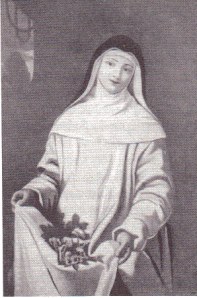
Diane, Marquise de Ganges, painted by Mignard as Saint Roseline (Hospice de Villeneuve-les-Avignon).
This is where the paranormal enters the picture. In the beginning, even before her marriage, the Marquise did not seem very sure of herself: strong-willed people do not visit fortune-tellers to find out whether the man they have chosen is the right one. Louis Pauwels is reminded of a story recounted by Paul Bourget in L’Irreparable. Perfectly relaxed and happy before her marriage, a young woman changes radically, as soon as the ring is on her finger, into a being who is perpetually depressed and worried. In the Marquise’s case, the clairvoyants could have played the role of fixing this anguish, being “catalysts”, convincing her that someone wants to kill her. Gradually, her fear becomes so strong – particularly as the prediction is made a second time – that it creates a sort of psychosis of assassination in her two brothers-in-law. According to the schema described by many mental illness specialists and psychiatrists, which consists in projecting one’s own ideas and tendencies onto those of other people. To the classical: “I love her, therefore she loves me” is substituted here “I don’t love them therefore they hate me, and therefore they want to kill me”… And this fear is projected with such force onto the two men, who are themselves weak-minded, that it finishes by completely destroying their personalities. Doubtless helped along by the husband as well, they finish by acting like hallucinated, irresponsible beings. “Someone possesses my soul and governs it! I am only a slavish, terrified spectator of all the things that I accomplish”, says the hero of the Horia, Maupassant’s short story.
There are cases like this where it is the victim who plays the role of the executioner…
***
As for the clairvoyants, the first one is La Voisin who was to become the sinister heroine of the Affair of the Poisons which provoked a real crisis under the reign of Louis XIV, with the effacement of La Montespan and the discovery by the Lieutenant of Police of Paris, Gabriel de La Reynie, that the greatest names of the kingdom were implicated. History has not remembered the name of the second one. But both predict to the Marquise that she will be assassinated in a family affair. And it is there that the paranormal intervenes a second time. Louis Pauwels thinks that the clairvoyants only read, by telepathy, the young woman’s fear. The force of her obsession was such that she managed to transmit their prediction to them…
They are greatly responsible for having formulated this prediction. When clairvoyants read death in cards or via other mancies, they usually abstain from saying so. For either they are telling the truth and then, many examples prove it, nothing can stop the wheel of Destiny, or they are mistaken and the result can be identical. Louis Pauwels says that he knows two people who died on the exact date that had been predicted to them. One in a car accident, the other from a heart attack. Because it was their destiny or because they died of panic?
***

